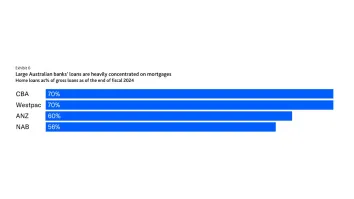Southeast Asia’s digital banks – the road from good to great
By Alexander Pariyskiy & Raphael BickExperts from McKinsey share five principles digital banks need to practice.
Not that long ago, digital banking was a niche play in Southeast Asia; now it is well established.
Accelerated by the pandemic and supported by updated regulation and the introduction of dedicated digital banking licenses, McKinsey identified more than 40 digital banks are operating in the region, compared to just a few in the 2010s. Of these, more than 10 are already profitable.
Consumer acceptance is spreading. In Indonesia, for example, one in five adults has a digital bank account.
But there is still room to grow. In South Korea, where digital banks started earlier, half of consumers have a digital account.
A McKinsey analysis of Korean banking data estimates that digital banks account for approximately 15% of unsecured consumer lending and 9% of consumer deposits in South Korea, more than in any Southeast Asian market.
Continued success in ASEAN, however, is far from inevitable. High interest rates, which have contributed to recent performance, cannot be expected to stay elevated forever. Competition is intensifying, including from incumbent banks.
To meet the moment, digital banks need to keep these five principles front and centre.
- Start lending early. Lending is key to profitability, starting with unsecured loans to consumers and small businesses. Few digital banks have managed to make money without a sizeable lending book (UK-based Revolut is a notable exception). Building a
strong lending business will inevitably feature risk; digital banks will learn through experience, especially for those without access to privileged data. Global leaders like Brazil’s Nubank have adopted a graduated approach--starting by lending small amounts to a broad set of customers, then gradually increasing limits for good ones. - Develop partnerships. Cracking the code of rapid and cheap customer acquisition is essential. In Asia, one successful approach has been to forge an equity-based, exclusive partnership with a super-app. But this is not the only way. CIMB Philippines, for
example, has scaled up to more than 8 million customers and become profitable through its non-equity commercial partnership with GCash, a financial services app, and others. Singapore’s Trust Bank has acquired 800,000 new customers by working with the NTUC FairPrice supermarket chain and tapping into its loyalty program and network. - Plan for the next source of growth. Once the initial backbone—typically daily banking and unsecured lending—is built, it’s important to plan what to do next. One possible approach is to “go wide” by adding products such as secured lending and wealth management and entering adjacent segments such as small businesses. Another is cross-border expansion, but requires financial, talent, and technological capabilities, as well as access to a local ecosystem. A third is to “go deep” by offering a broader range of services to existing customers. Nubank’s app, for example, allows customers to book air tickets and hotels.
- Strengthen the core. Too often, startups begin in haste. That can lead to a host of issues, including persistent talent gaps; not paying enough attention to technology architecture and engineering standards; and underinvesting in organizational building and culture. If the foundation is shaky, growth will be a struggle. It’s best to start addressing these
issues sooner rather than later. - Build in-house tech and data capabilities. As competition ramps up, differentiation will increasingly depend on having a flexible, innovative, and responsive back end that provides data-enabled personalization and automation. Buying those capabilities from an outside vendor can allow for a faster go-to-market at the start. In the long run, though, this approach can be more expensive and slow down innovation. Leading digital banks therefore combine in-house capabilities with vendor-supplied expertise to create the best technology and data stack. Lack of relevant domestic talent is a concern, but technology makes it feasible to tap skills cost-effectively regionally and even globally.
These five principles are directed at digital banks. But they also apply to incumbents who want to get in the game. Traditional banks have the advantages of experience and trust. If they accelerate their digital and AI transformation, they can use their scale to defend their position in areas like consumer lending. They can also go on the offensive, by working with non-banking players via joint ventures, mergers and acquisitions, or by launching a spin-off.




















 Advertise
Advertise










